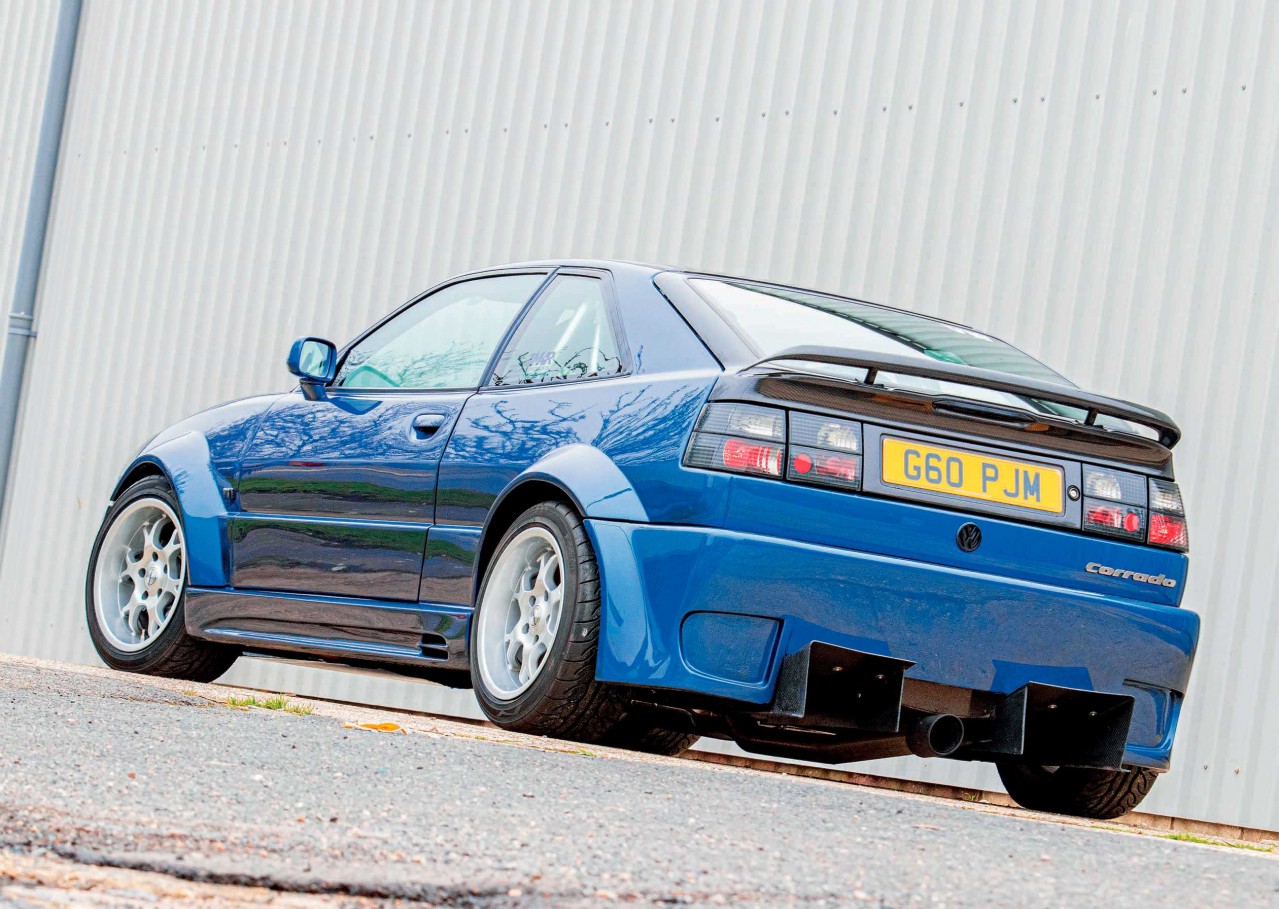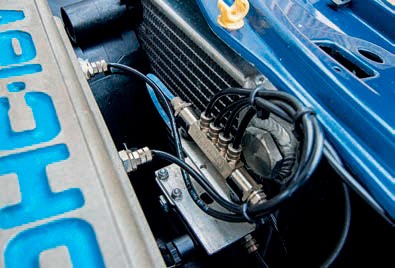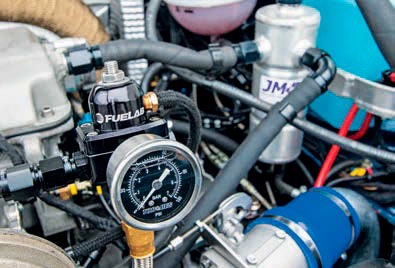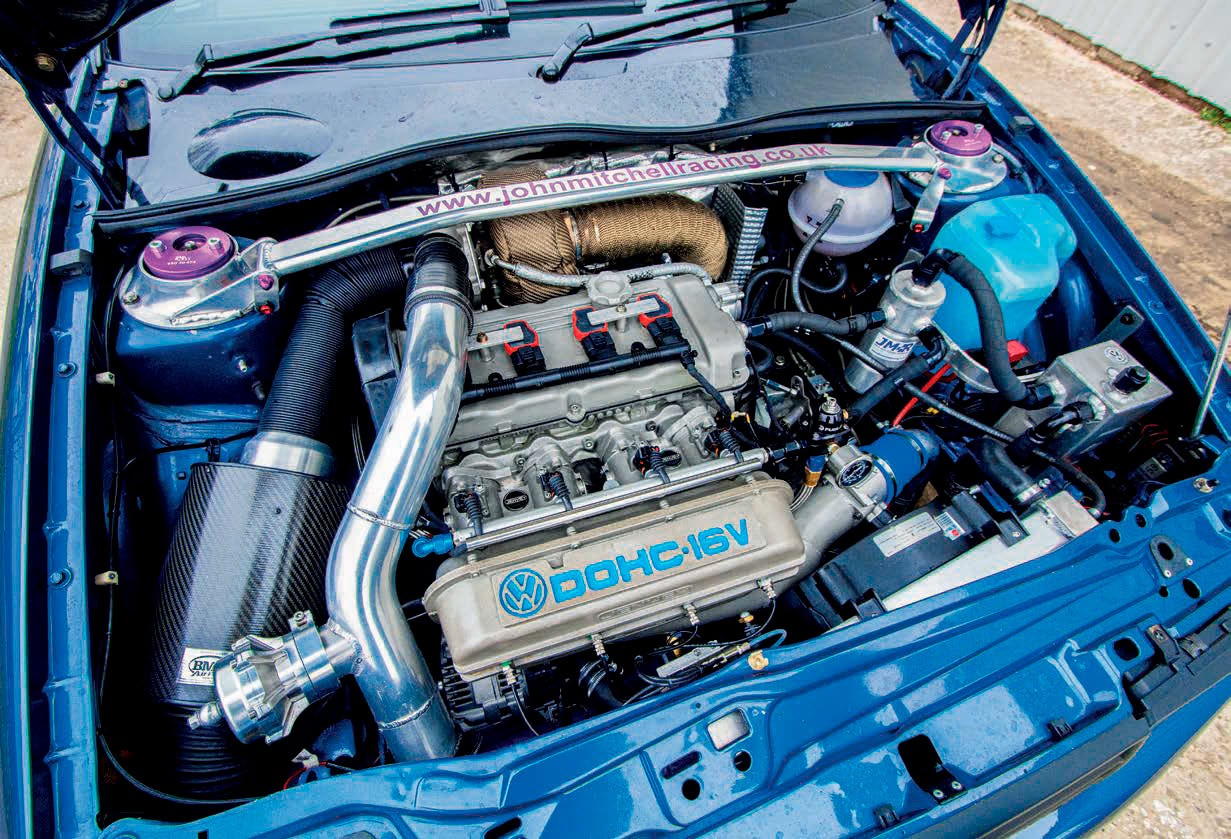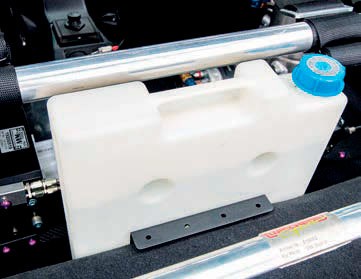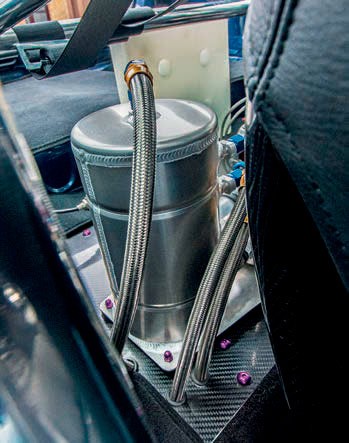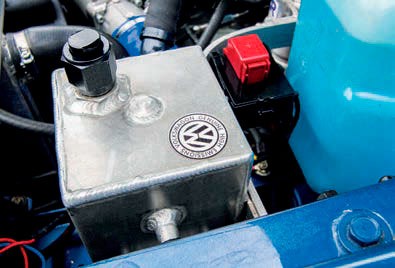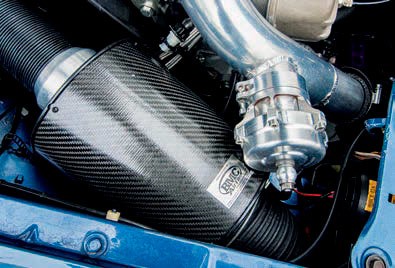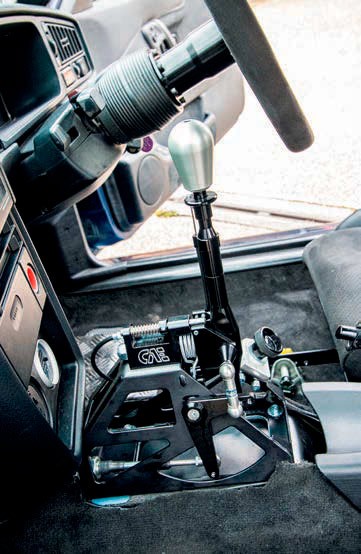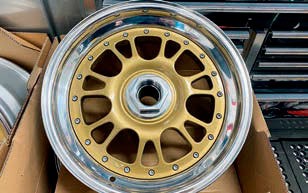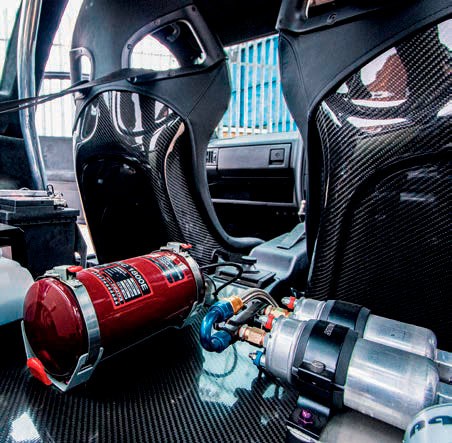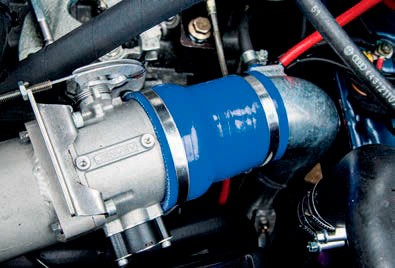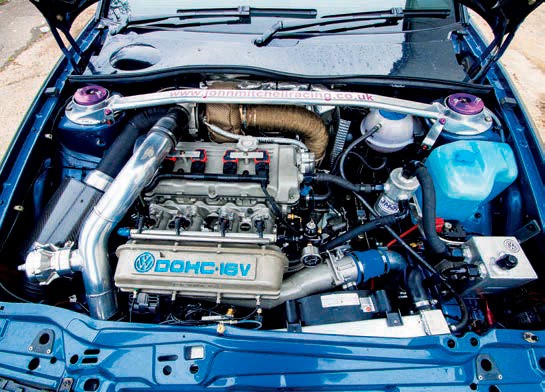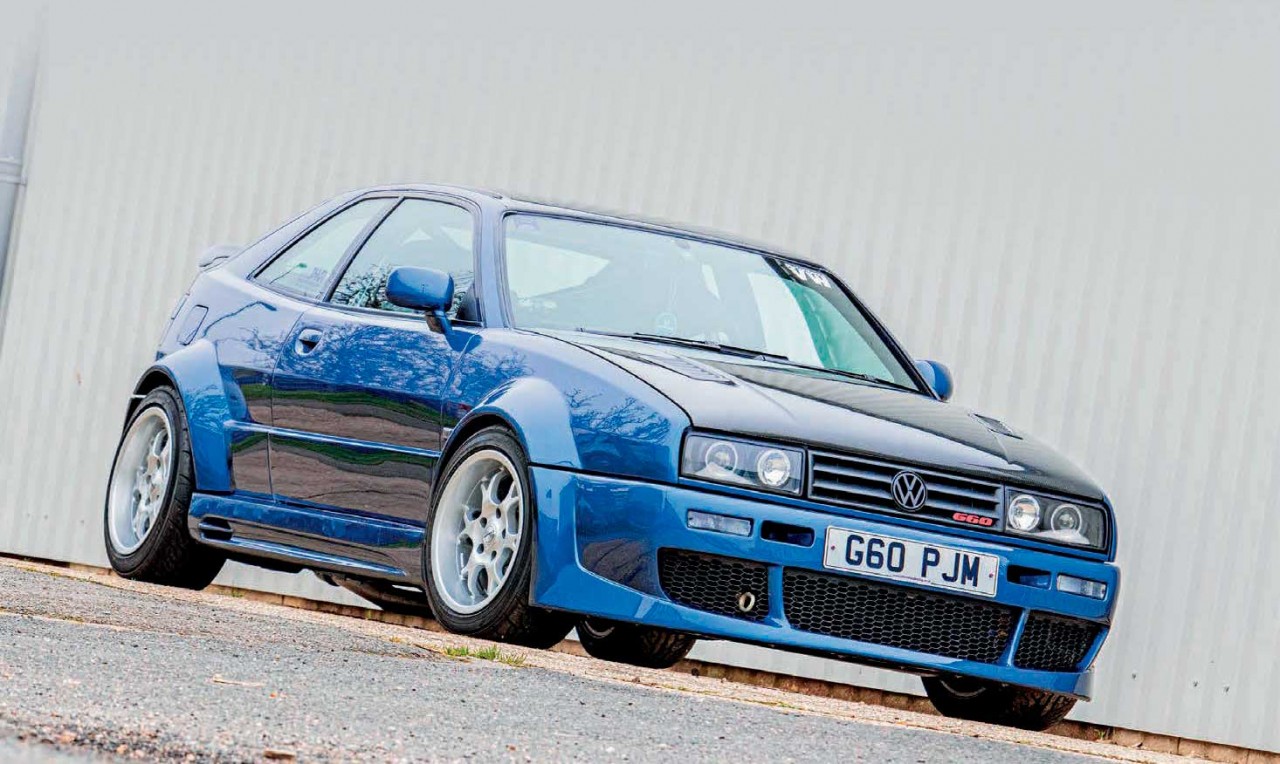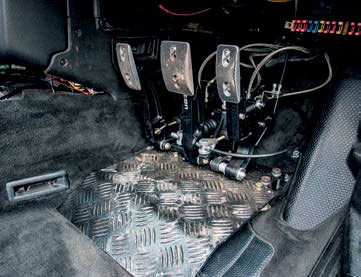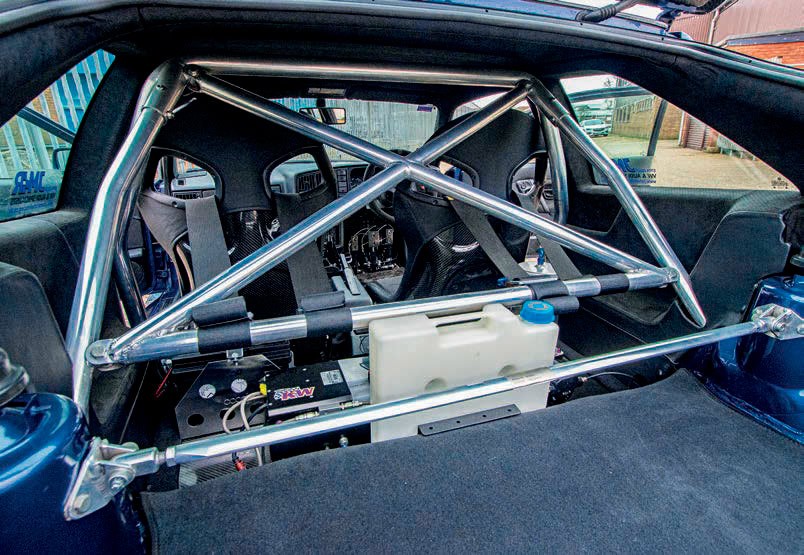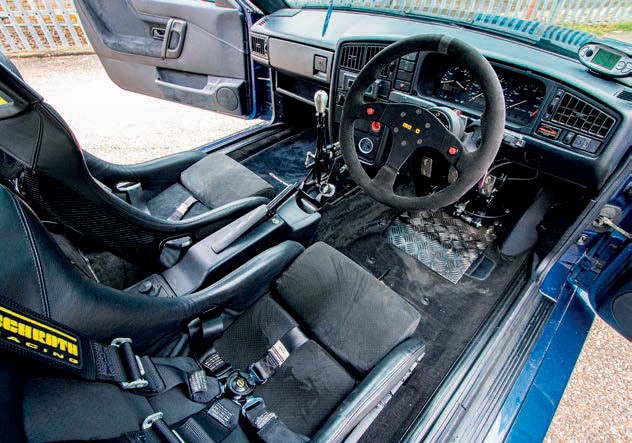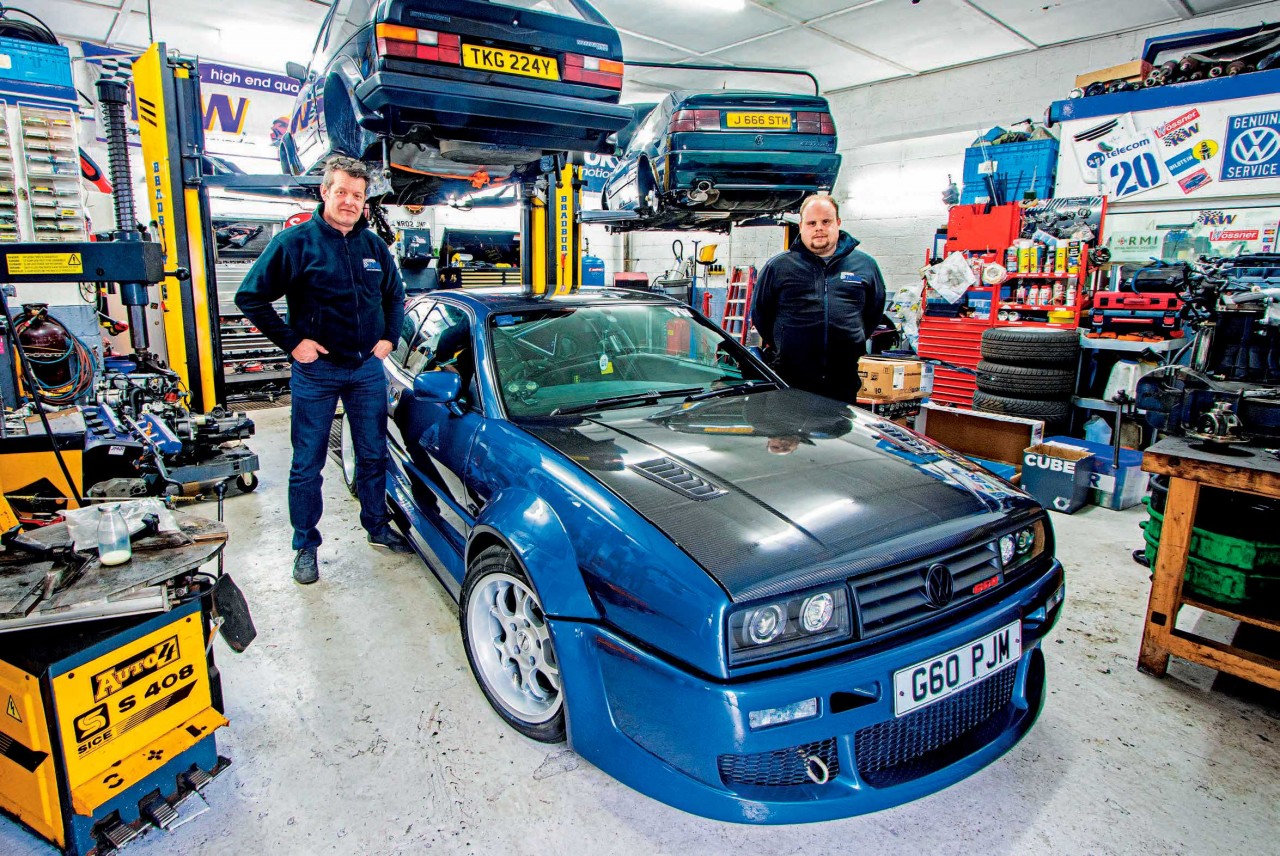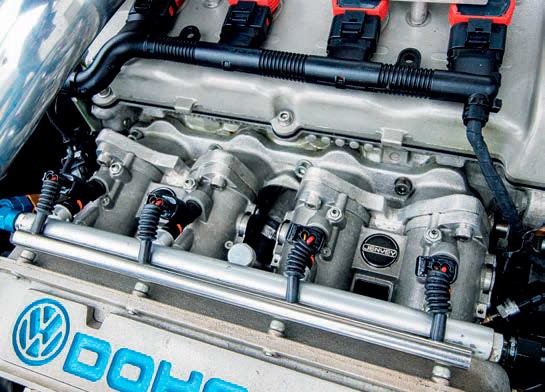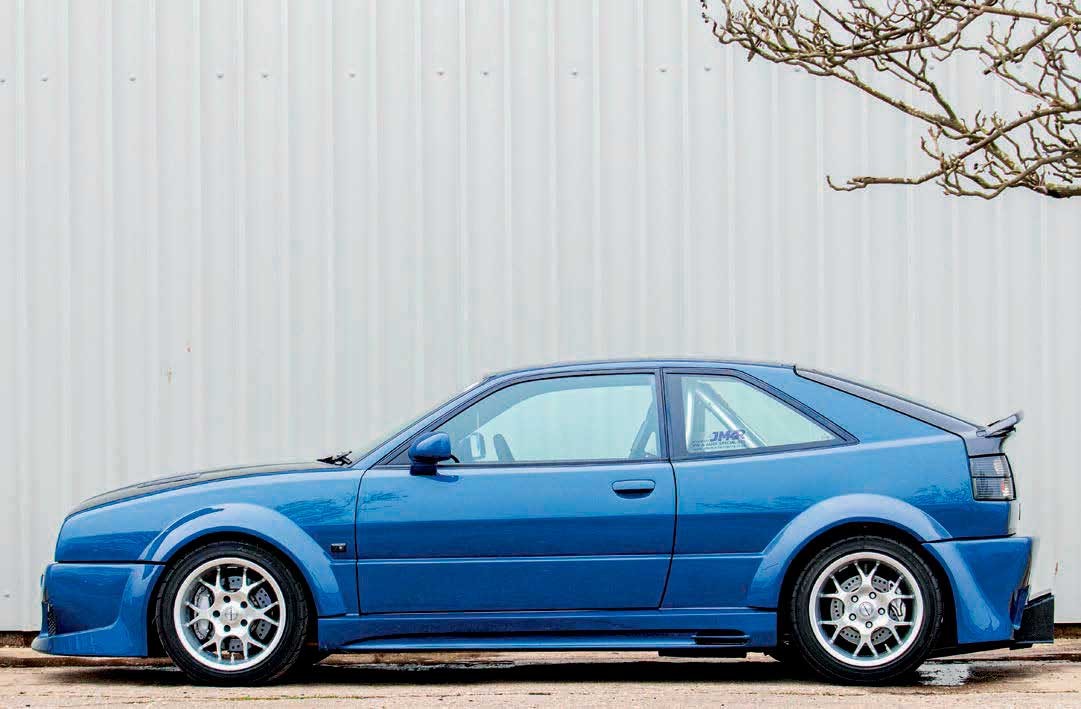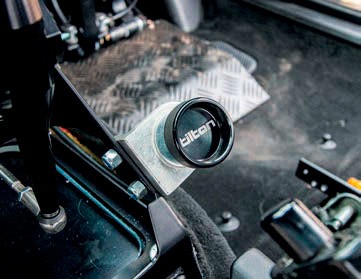STREET FIGHTER 575bhp CORRADO 4×4
All-wheel-drive Haldex-equipped 16v turbo coupe
Fifteen years. For most of us it seems a crushingly short lifespan for a car, but that’s how long manufacturers expect their latest models to trudge up and down motorways, haul luggage and crawl through commuter traffic before retiring as scrap. So when you picture a single owner spending almost twice as long perfecting their project, changes-of-plan feel like an expected part of the process. And sometimes the biggest U turns arrive with a whimper, instead of a bang.
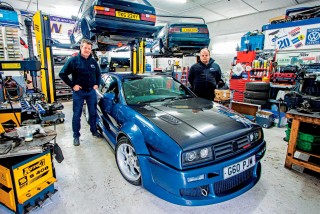
“I blew a hole in the top of the supercharger coming back from Stanford Hall eight years ago,” says John Mitchell, recalling what had already been 20 years of hard work taking an unexpected dive south. “I wasn’t even going full chat at the time, just pulling up to some traffic lights at about 30mph, and I heard this ‘pop’ under the bonnet. That was it – metal fatigue had finished it off. So I decided I’d go turbo instead, and take on all the work that came with it.”
“We developed and built our own fully mechanical centre diff, giving us permanent four-wheel drive”
We’re not talking bolt-ons and a remap here. John isn’t one for taking the easy route – actually, his professional reputation is quite the opposite. Bought as a daily driver, the Corrado has spent almost half its life as a sort of development mule for the products and services he offers through his own business, John Mitchell Racing (JMR). So there’s been no room for cutting corners and, with a healthy throughput of tuned Volkswagen Group products to keep him busy, evolutions don’t come quickly.
That said, it’s barely the same car it was last time it put tyres on tarmac.

Some of the ideas here predate its above average ownership period. Having grown up around fast Fords, John switched allegiance to Volkswagen-Audi while working at one of the UK’s biggest dealers in the 1980s – and he reckons he couldn’t have had a better introduction.
This was a crossover period of Mk1 and Mk2 GTIs and, as one of the country’s few Quattro dealers, it offered a chance to get hands-on with drip-down Group B engineering as well. But the biggest influencer rolled onto the forecourt in 1989 and stopped him in his tracks.
“We had one of the very first Corrados in our showroom because we were quite a prestigious dealer, and I fell in love with it the styling and the shape of the car straight away,” he tells us. “Unfortunately it wasn’t all that startling to drive, the 16-valve wasn’t really cutting it against Vauxhalls of a similar age. So when I heard rumours of a supercharged version, I hoped that would address the final part of the mix. I set my sights on owning a G60 one day, and I found this one almost by accident.”
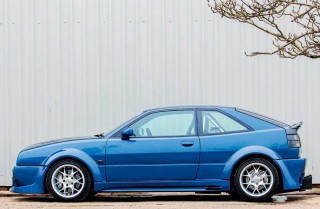
It was keeping some unlikely company at the time. An early UK-spec G60, it had been damaged by its first owner and written off due to the eyewatering cost of repair panels, ending up being sold on to a specialist BMW breakers yard as part of a job lot. The yard owner had been only too happy to offload it and, with a few useful contacts in the trade, it was a cheap route to G60 ownership back in 1992.
However, it didn’t quite hit the mark. “At first I put it back to stock, but I kept looking at it and thinking I could get more out of the engine,” says John. “So I started tuning the 8-valve, but realised I needed to take a different route and go for a 16-valve G60 instead. It took four evolutions of that engine to get to the 300bhp I wanted.”
JMR now offers 16-valve G60 engines almost off the shelf, but the prototype was a seemingly unending process of trial and error. The Corrado started out with a supercharged KR, lifted from a Mk2 GTI, later fitted with a 9A bottom end to raise capacity to 2.0-litres. It’s not a straight swap by any means; the G60 breathes through the head, the 16-valve through the block, requiring a complex breather system to avoid pressure build-up in the crankcase at the top end of the rev counter.
Still not quite getting what he wanted out of it, version three was based on a full 9A engine with stronger internals and KR cams, which John says were a near perfect profile for a G60. But it took custom-made cams and alterations to the compression ratio, needed to make up for the G60’s relatively limited air flow, before the coupe cracked 300hp and offered the durable, tractable recipe that he’s been providing to customers ever since. As we said; no easy routes here.

“It’s a great little unit; they sound fantastic, they go really well, and they blend the best of the G60’s low-down torque with the high RPM potential of a 16-valve. The trouble is, of course it does hinge around that G60 which is probably not the strongest ‘charger to go with if you want to use the car a lot,” he says.
“Geoff [Everett] who founded AmD, always said mine was a great engine but wasted on the charger, and told me it would never go as well with a G60 as it would with a turbo. So partly in homage to him, and partly out of curiosity, I decided to follow his advice when the charger eventually let go.”
That learning curve paid dividends when it came to replacing the weakest links in the chain. The rebuilt 9A is force-fed by a Garrett GTX turbo, perched on top of four equal-length tubular manifold runners at the back of the engine bay, while the OMEX 710 ECU enabled him to upgrade to a modern coil-on-plug ignition setup, mounted in a custom-made rocker cover and operating off a cam sensor where the distributor once was. This also offered the chance to push the envelope with the induction system, developed in collaboration with Mike at Jenvey, and the solution wasn’t quite what he was expecting.
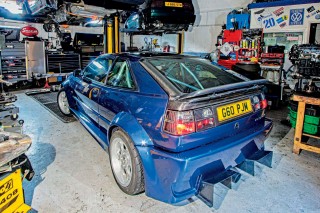
“I wanted an engine that was as responsive as possible, and I liked the idea of running one throttle valve per cylinder,” he explains. “But when we were running it on the rollers we found it was very snappy. As a quarter mile car or an all-out track machine it would have been fine, but we had to tune it down for the road. We’re still using the plenum with the air horns all set in underneath, but we’ve gone with a single Jenvey throttle valve on one side. So it still benefits from the fantastic airflow of that throttle body concept, and it works supremely well.”
The Corrado’s extended downtime offered plenty of space to consider the best possible transmission setup for the hiked power output.
It’s making use of the coupe’s larger central tunnel with a Haldex-based system from a Mk1 TT, but systematically re-designed around John’s needs. The Golf Rallye rear beam is adapted not only for the Haldex differential, but it’s also fully adjustable to avoid excessive camber at low ride heights, while the TT’s prop shaft features CV joints instead of the rubber ‘donut’ couplers fitted by Audi. These offer more movement and produce fewer vibrations when accelerating hard.
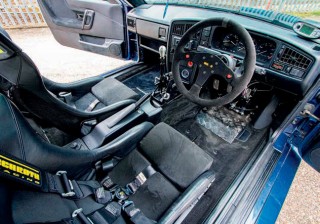
John wasn’t accepting any compromises here. “The Haldex itself wasn’t happy with how it was being run, so we developed and built our own fully mechanical centre diff, giving us permanent four-wheel drive. It was fairly costly developing a system that would pair up with the diff, give all the correct gearing tolerances, and then obviously be strong enough and easy to work on, logical in its construction and compact enough to fit within quite a tight space. We have all of that, it’s been on the car for a couple of years now and working quite happily,” he says.
The pursuit of traction turned out to be a game-changer. Having got the mechanical parts working together, early road tests highlighted the need for a wider track than the coupe’s Karmann-honed arches could accommodate. After several months spent arguing with himself about altering the lines he’d fallen for back in 1989, John eventually decided out a Berg Cup-inspired wide-arch kit as the neatest way to get the width needed – around 15cm per corner, he reckons. There’s some serious investment underneath its swollen bodylines. The Corrado runs KW Clubsport suspension with a hydraulic lift kit, and a custom-made Brembo and HiSpec brake kit to rein in the brutal straight-line pace. Its Advan-wrapped Borbet BS wheels are BMW 5×120 fitment, weighing in at 9×16 inches and filling the arches with the help of some sizeable hubcentric spacers. These are a proof of concept setup, soon to be replaced by a set of custom made Image centre-lock wheels tailored to its exaggerated track.
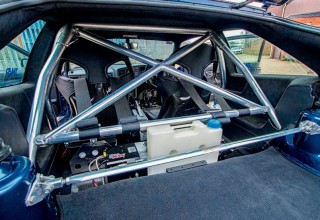
Even the body kit didn’t escape John’s eye for improvements: “We’ve radically redesigned the rear bumper run a functional carbon diffuser through it. The side pods are removable, and I redesigned the front bumper to provide extra air flow to the radiators, because I hate the idea of just drilling holes and meshing it.”
That engineering-first approach is evident inside, too. Although it’s not stripped bare, driver and passenger are harnessed into custom-trimmed 911 GT3 carbon fibre seats, a few inches from the hum of its twin Bosch fuel pumps and other ancillaries mounted where the rear bench once was. There’s a CAE shifter within easy reach of the alcantara-trimmed Momo wheel, while the Tilton pedal box offers front-rear brake bias alterations via a knob on the centre console. It’s impeccably well finished, but you’re never too far separated from the mechanical madness going on all around you.
For all that modern technology, though, the experience is straight out of the 1980s performance car rulebook. “It’s making just shy of 575hp, so it’s a bit of a handful,” he says, laughing. “We’ve managed to tame some of its wayward attitude with the initial development, like using spherical bushes to rein in the torque steer, but you’ve got to really get hold of it and drive it. I liken it to an early 911, it’s massively entertaining, makes a cracking noise and entertains others who are similarly orientated thought-wise.” Of course, nothing is final. Having built up a tractable fast-road machine, John is turning his attention to full under-body aero, and it’ll get a custom-made independent rear suspension setup for further fine-tuning of the suspension geometry. But the near-future priority is electronic power steering and, as usual, he’s not taking the straightforward route.
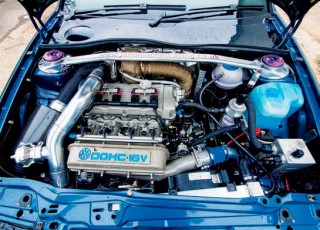
“It can be a bit of a handful below 40mph where you’ve got all that power and really heavy steering,” he explains. “We could just bung on an electric power steering kit and have it set on overkill, but it would be equally dangerous having super-light steering at high speed. So we’re making it speed-correlated – it’ll wind off the assistance as you get faster, then cut in again as you slow down. It will be a genuinely engineered system, instead of having a sledgehammer to crack a nut.”
That’s an interesting take for a process born out of the supposedly simple observation that the 16-valve Corrado couldn’t quite cut it in the performance stakes. Quick and grippy enough to chase down genuine Group B machinery, let alone the roadgoing versions, it’s got all the character of a 1980s supercar but with the day to- day usability of something modern. And with a taste for overcoming macro-level engineering issues to get the most out of it, we’d put money on this one having at least another automotive lifetime’s worth of fi ne tuning before he downs tools completely.
“If you don’t do it exactly right then it just doesn’t deliver the same amount of satisfaction and you’ll be back in there at some point making it good,” says John. “So the best way is to just do it right the first time, and if it takes a long while, then so be it. It’s not life and death, and it’s always worth the hard graft in the end.”
CHANGE OF IMAGE
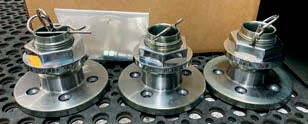
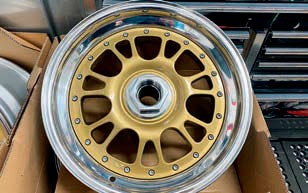
Proof that there’s no chance of this project standing still, the Corrado has changed again since our photoshoot. Working with Image Wheels, John has swapped the massive spacers for a custom centre-lock conversion for these gold-centred 9x16s. It’s the finishing touch having got the chassis setup spot on with the Borbets.
DUB DETAILS
ENGINE: 2.0-litre 16-valve 9A, Schrick baffled sump, Wossner pistons, PEC rods, ARP studs and bolts, ported head, custom Piper camshafts, steel head gasket, Garrett GTX23071 turbo, Jenvey throttle body and plenum with custom DOHC badging, modified Audi RS2 intercooler, BMC induction kit, stainless steel boost pipework, tubular manifold with equal-length runners, custom three-inch exhaust system with centre-exit, coil- on-plug conversion, custom rocker cover with plug holes and relocated oil filler cap, OMEX 710 ECU, custom wiring loom, Jenvey fuel rail, Bosch 900cc injectors, Fuelab motorsport fuel pressure regulator, Golf Rallye fuel tank, 2x high-capacity Bosch fuel pumps, fuel swirl pot, -06 JIC ProGold hoses and unions for all fuel lines, modified Audi RS6 oil cooler, Aquamist, Audi TT Mk1 02M six- speed transmission with JMR strengthening, Quaife limited slip differential (front), Sachs motorsport lightened single-mass flywheel and clutch, JMR mechanical centre diff, JMR central prop shaft with CV joints, Audi TT Mk1 Haldex rear differential
CHASSIS: 9×16 Borbet BS wheels, 225/45 Yokohama Advan Neova tyres, 50mm (front) and 40mm (rear) H&R hubcentric 5×100-5×120 spacers, Golf Rallye rear beam adapted for camber/toe adjustment and Haldex diff, 5×100 hubs, KW Clubsport coilovers, KW solid top mounts, KW HLS front and rear, Brembo four- piston front brakes with custom 304×30 two-piece lightweight discs, HiSpec rear calipers with 280×22 two-piece custom discs, Tilton brake bias adjuster, front and rear strut braces, half roll cage
EXTERIOR: RDX WideRacer bodykit with modified front and rear bumpers and removable side pods, carbon fibre rear diffuser, vented carbon fibre bonnet, carbon fibre roof, projector headlights, late-spec three-slat grille, clear front indicators, Audi door handles, carbon fibre tailgate and spoiler, smoked rear lights
INTERIOR: Porsche 911 GT3 seats with custom Trim Deluxe half-leather retrim, Schroth harnesses, Momo Mod.80 steering wheel, alcantara door cards, rear seats removed, Tilton pedal box, CAE shifter, Zeitronix wideband display, FEV fire extinguisher, battery relocated to rear seat tub
SHOUT: Joe at Trim Deluxe, Chris at Everymans garage, Ben Kilford at JMR, and to my long- suffering wife for tolerating another phase in my other life!
JMR now offers 16-valve G60 engines almost off the shelf

